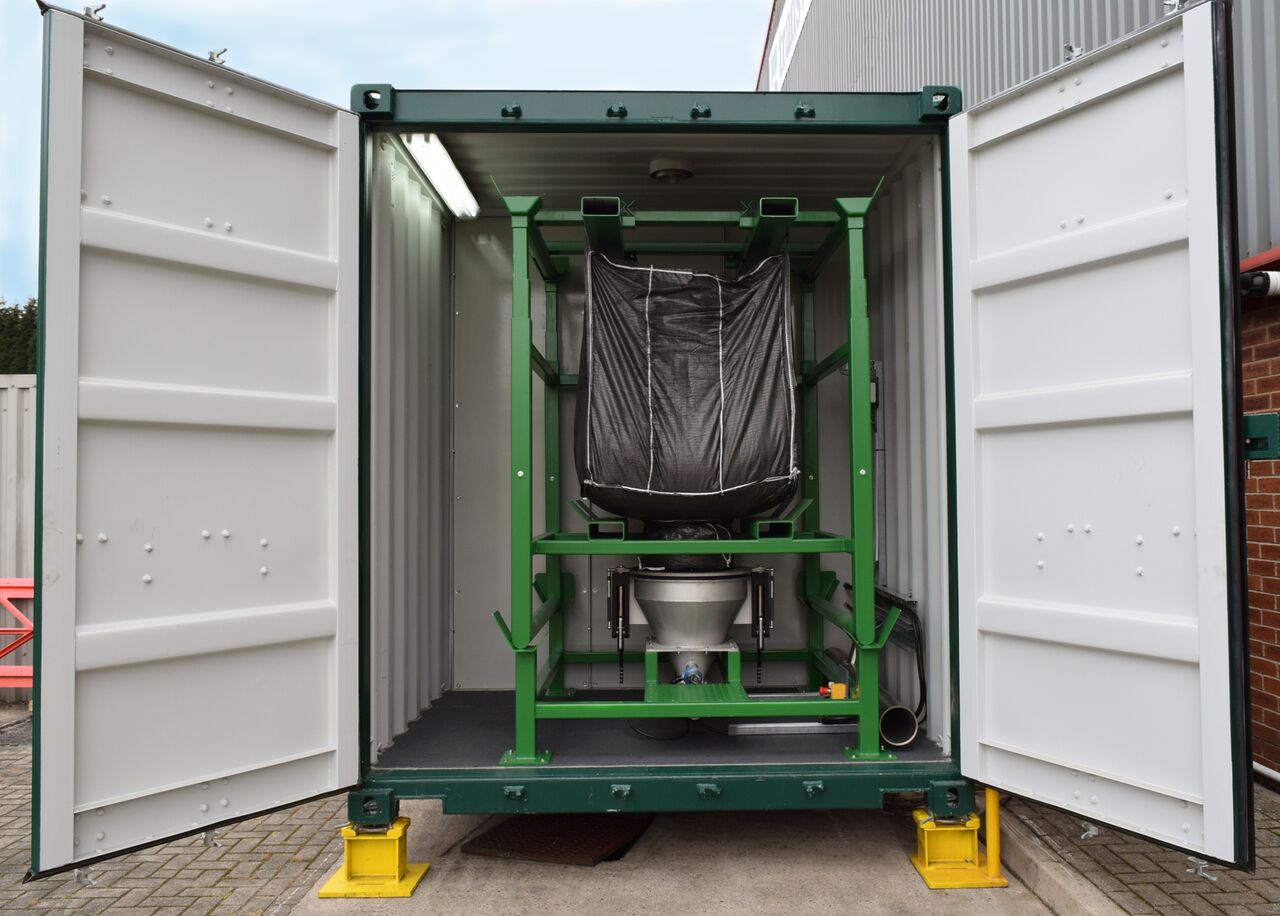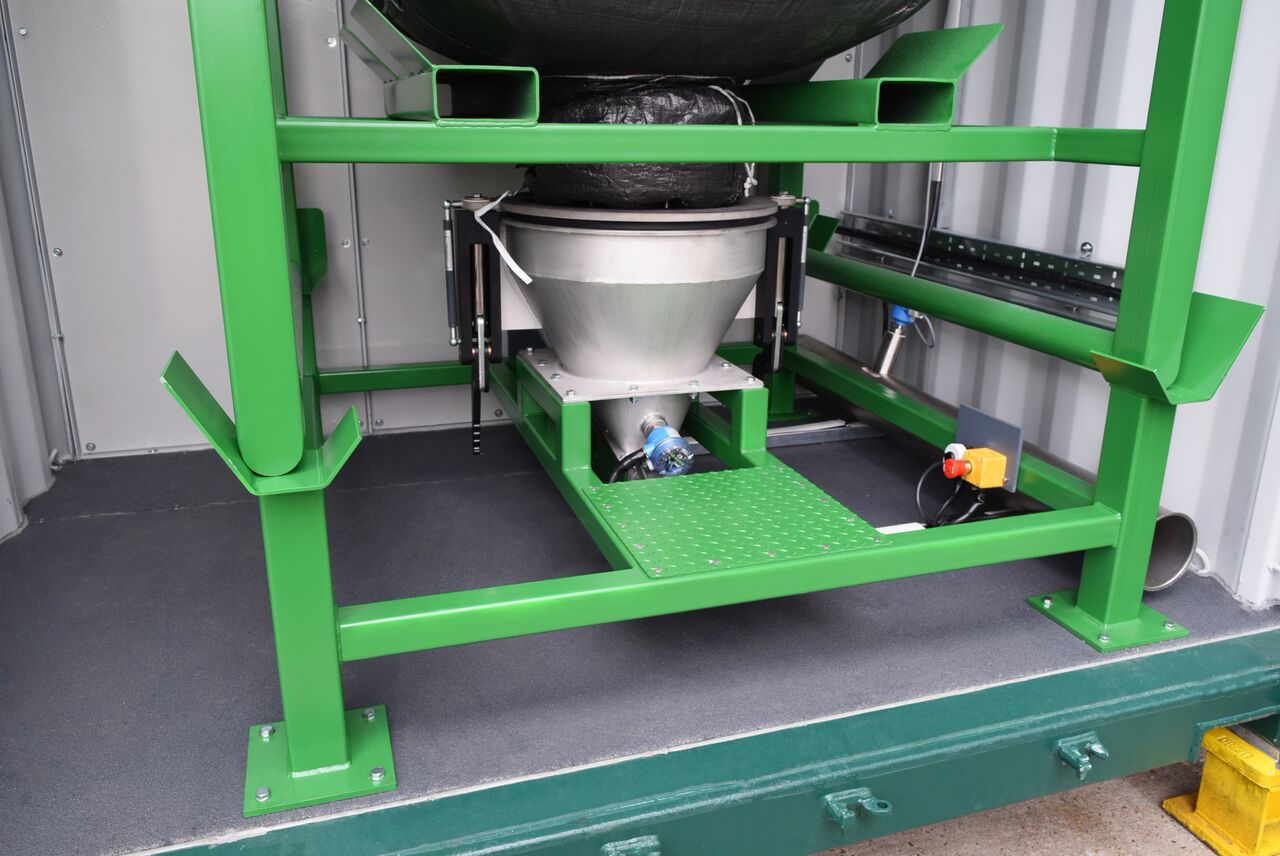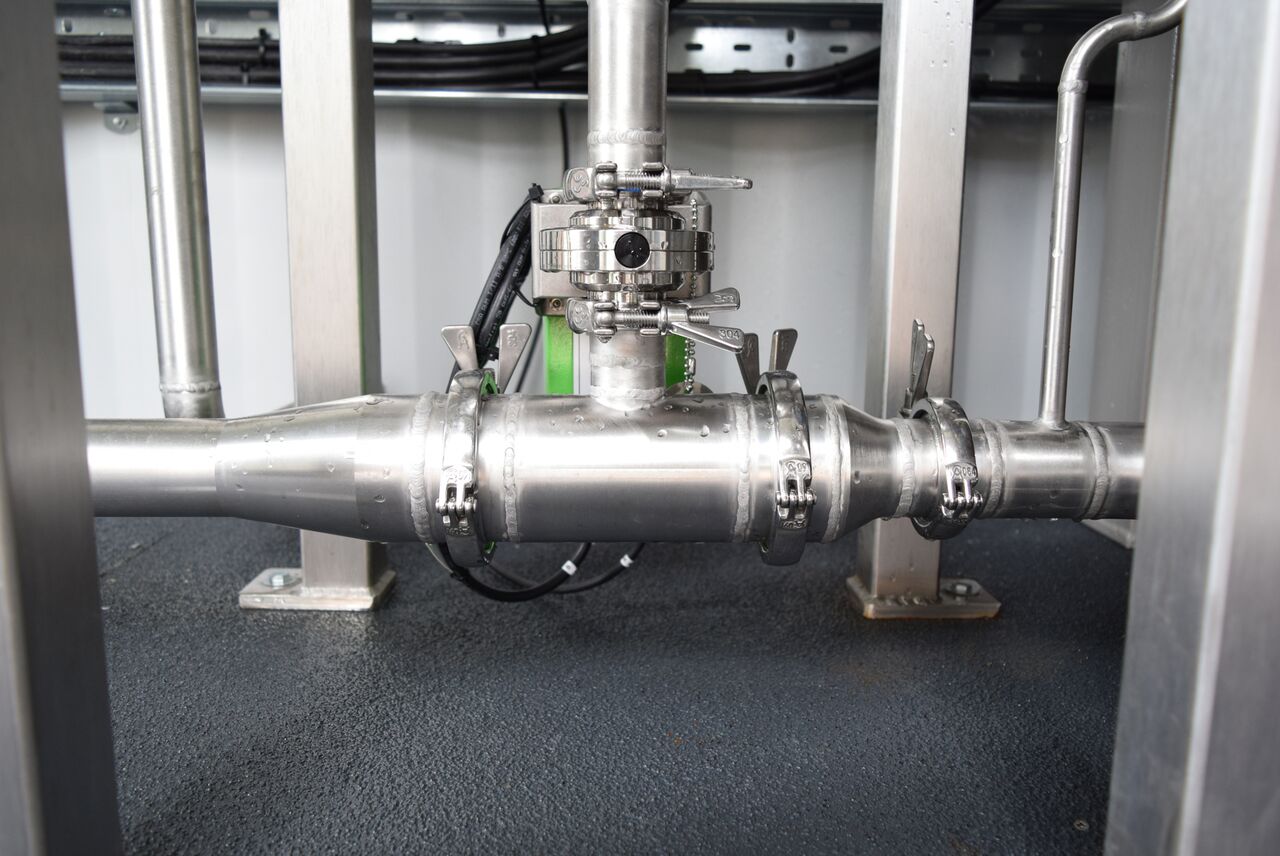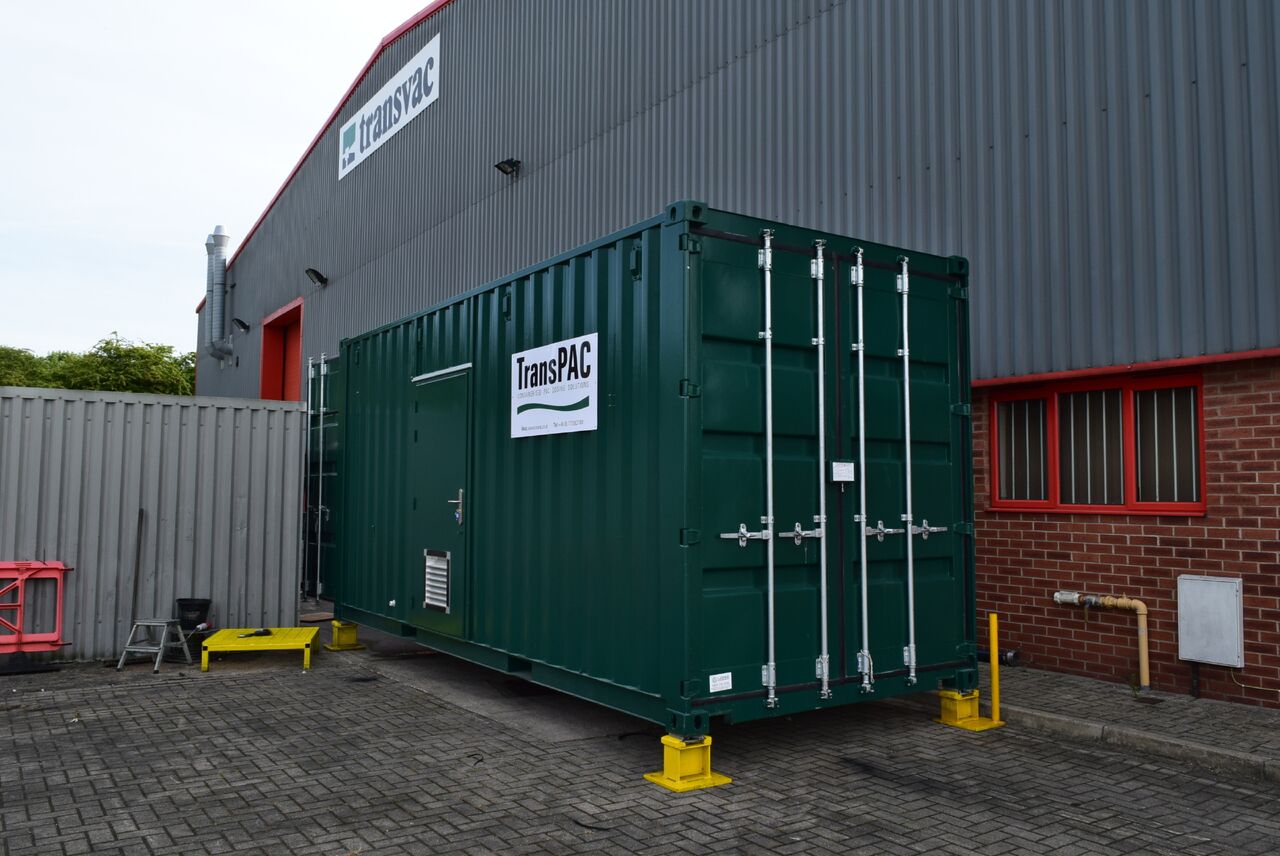



Water Treatment Works at Yorkshire Water experienced a significant rise in taste and odour complaints. One company provided the Water Treatment Works with a carbon dosing unit to ensure that the water was of sufficient quality for the customers.
Thanks to having a brand new, carbon dosing TransPAC unit in stock and ready at Transvac Head Office in Derbyshire, UK, the team were able to fully FAT test, deliver and even commission the carbon dosing system in under a week. This delivery enabled Yorkshire water to start dosing PAC into their water almost immediately, saving them from further taste and odour complaints.
The dosing system is a fully containerised system that is used by water treatment companies to dose Powdered Activated Carbon (PAC) into the potable water stream. Activated carbon is widely used in the drinking water treatment process for the removal of pesticides, algae blooms and to tackle taste and odour issues. Traditionally, Granular Activated Carbon (GAC) beds are used. However, these are huge capital expenditure projects. Further to this, the operating expenses remain very high, as the GAC requires regeneration at regular intervals. PAC however can be easily and safely dosed into the potable water, using an ejector.
The system is designed to provide an all-in-one PAC dosing solution that can be physically moved from site to site. This unique package allows water treatment companies to collect the TransPAC and move it between their sites. Often algae or taste and odour issues are seasonal and short-term, so the ability to move the unit to the specific site with an issue is a huge cost saving for the water company. Inside the secure 20 ft shipping container is a bulk bag dosing frame, an intermediate hopper, 800 litre header tank, automated HMI control panel and ejector dosing system.
As the TransPAC is fully containerised, the whole unit was lifted via a Hiab lorry and driven to the problem WTW site in Yorkshire on the same day. With no need for building or groundworks, Yorkshire Water was able to hook it up and start dosing straight away. Engineers attended site to install and commission the unit, setting the PAC dosing rates to the exact requirements of that particular site, to tackle the taste and odour issues. With the system, no PAC is wasted and the flow can be adjusted as future conditions change.
How it works The dosing unit uses an ejector to entrain and dose the PAC into a water stream. The system is supplied with both a bulk bag dosing frame and silo feed chute as standard, allowing the site engineers to choose their preferred method of transferring PAC into the hopper, either from changeable 1 m3 bulk bags of PAC or a direct silo feed.
The PAC enters the small hopper at the back of the unit where it is then screw fed to the large intermediate hopper. Next, the correct dose rate (determined by the site engineers) is screw fed to the variable pump and this is then automatically entrained into the ejector. Ejectors work by using a high-pressure motive (in this case, water pumped from the header tank) to entrain a secondary liquid or solid, in this case the PAC. The PAC and water slurry mixture is discharged from the ejector and out into the connecting pipework. The dosing unit has no ‘wet mixing’ moving parts, which provides unrivalled reliability and it’s low maintenance control philosophy even flushes the lines clean on shut-down.
The result This project required a quick reaction from all teams involved to complete the system installation as quickly as possible, with rapid mobilisation of the commissioning engineers to get the system up and running at the ailing site. The system is designed to be very simple to install/commission and was fully operational within just two days, with the 3rd day utilised for operator training. To get the site running as quickly as possible, installation checks and onsite training was provided by Transvac’s commissioning engineers. Once this was completed, the site could start dosing carbon to remove the earthy geosmin compound which was causing the taste and odour issues.
This specific Yorkshire Water site already had a hard-standing area to house the packaged system. With flexible hoses ready to connect the system, it was up and running within two days. No issues were experienced on site during commissioning. The client was extremely pleased with the quick turnaround. Thanks to having a TransPAC in stock ready-made, the whole timescale from initial order placement to delivery was one week.



